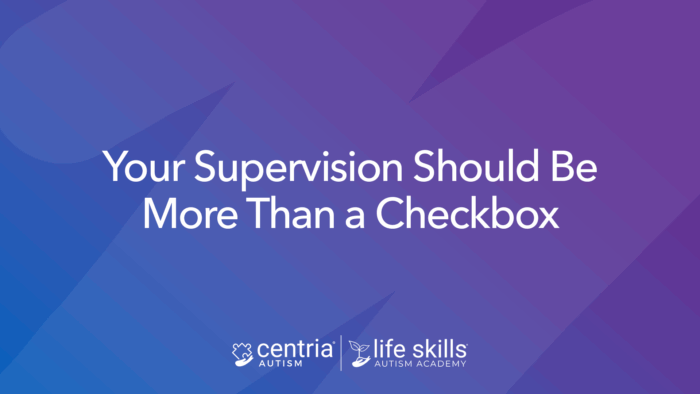It’s easy to be swept up by the language of innovation when talking about Skills-Based Treatment (SBT) and Practical Functional Assessment (PFA). But here’s the truth: they’re not brand-new breakthroughs. They’re thoughtfully assembled packages of well-established Applied Behavior Analysis (ABA) principles, designed to be safer, more effective, and more compassionate.
So let’s peel back the layers of the “shiny new thing” and take a closer look at the behavioral science that powers these approaches.
1. Functional Communication Training (FCT) and Synthesized Reinforcement
Core principle: Behavior is communication.
Both SBT and PFA begin with the assumption that challenging behaviors serve a purpose, often to access reinforcement or escape aversive conditions. Instead of simply trying to extinguish these behaviors, we teach a functional communication response (FCR) that gets the same outcome in a safer, more acceptable way.
But SBT goes a step further: instead of addressing each behavioral function separately, it teaches an omnibus FCR (e.g., “My way”) that grants access to a synthesized reinforcement contingency, a blend of all the reinforcers identified during the assessment.
2. Mixed Schedules and Demand Fading
Core principle: Gradual exposure and reinforcement shaping.
Once the FCR is reliable, SBT introduces tolerance training through mixed or multiple schedules of reinforcement: delays, denials, and gradually increasing the effort required for reinforcement. This method is compassionate and patient-centered because the learner is only challenged when they are happy, relaxed, and engaged (HRE).
Demand fading also comes into play, starting with small, easy tasks and gradually increasing expectations.
3. Response Classes and Generalization
Core principle: Reinforcement expands behavior.
PFA identifies response classes as groups of behaviors that are occurring in the same context (single or multiple functions)—and synthesizes them during assessment and treatment. Then, through microshaping, skills-based chaining and CAB (contextually appropriate behavior) instruction, SBT builds a wider repertoire: asking for help, waiting, transitioning, completing tasks, endurance, perseverance, etc.
Importantly, the goal is generalization. Treatment doesn’t end in the clinic; it prepares the learner to use skills flexibly across environments, with ecological validity.
4. Discrimination Training and Chaining
Core principle: Teach when and how to respond.
Learners are taught to discriminate between available vs. unavailable reinforcement and practice responding appropriately in each context. Over time, these skills are chained into more complex routines, like asking for help, tolerating a delay, and transitioning to a task.
The use of visual cues, prompts, and reinforcement schedules during discrimination training ensures that learners understand what’s expected and what’s coming next—reducing anxiety and increasing independence.
5. Assent-Based Practice and Compassionate Care
Core principle: Respect and empowerment.
SBT doesn’t just build skills, it builds trust. Practitioners monitor the learner’s affect (HRE), wait for assent, and use the least intrusive methods possible. Therapy is framed around positive interactions, not managing crises.
The emphasis on autistic perspectives, avoidance of contrived reinforcers, and movement away from coercive practices like using hunger as a motivator are all rooted in trauma-informed care.
So, Is SBT “New”? Not Really. Just Better Packaged and Branded.
What SBT and PFA do exceptionally well is take a large body of ABA research and organize it into something more accessible, more intuitive, and often more humane. This approach doesn’t reinvent ABA, it simply presents it in a more compassionate, practical, and effective format.
That’s the heart of the innovation: a clearer path, not a new map.
Takeaway for Practitioners
If you’re using ABA but feel stuck in rigid programming or disconnected from client values, SBT and PFA might not offer you something “new,” but they will offer something more aligned with what ABA should always have been: flexible, empowering, and rooted in kindness.
Behavioral Roots:
- Carr & Durand (1985) – Functional communication
- Ghaemmaghami et al. (2018) – Synthesized reinforcement
- Luczynski & Hanley (2013) – Tolerance response training
- Green & Reid (1996) – Affect monitoring
- Carr & Durand (1985) – Functional communication
- Ghaemmaghami et al. (2018) – Synthesized reinforcement
- Stokes & Baer (1977) – Generalization
- Horner & Day (1991) – Response efficiency
- Durand & Carr (1991) – Maintenance and generalization
- Breaux CA, Smithe K (2023) – Assent-based care
- Rajaraman et al. (2021) – Trauma-informed ABA
- Hanley (2020) – Assent-based learning
- Jessel et al. (2018) – Practical assessment efficiency





